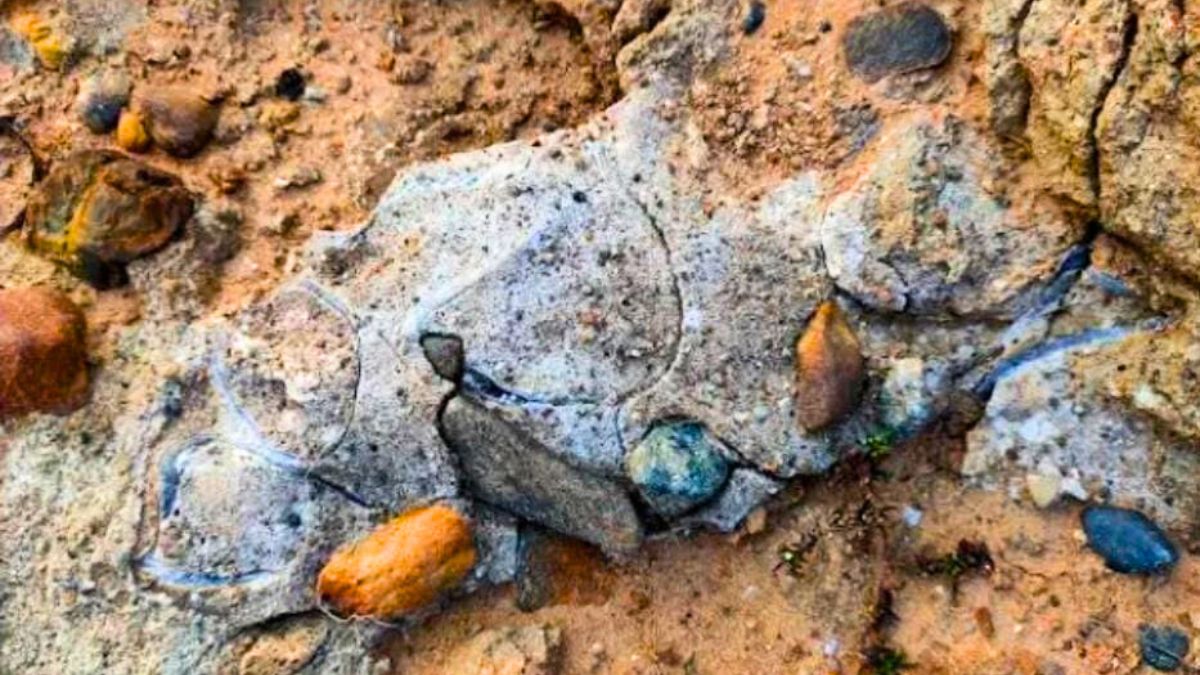Raipur: Tucked away from its famed tourist hotspots and nestled in the scenic landscapes of Chhattisgarh, lies an ancient treasure trove that offers an unparalleled glimpse into Planet Earth’s prehistoric past. The Gondwana Marine Fossil Park, situated in the Manendragarh-Chirmiri-Bharatpur district – is Asia’s largest marine fossil site, which unearths secrets that date back an astounding 293 million years.
Long before the subcontinent emerged in its present form, this region was submerged beneath a frigid ocean—now immortalised through fossilised remnants embedded within its terrain.
National Geological Monument status
Gondwana Marine Fossil Park was discovered in 1954 by geologist SK Ghosh during coal mining. Fossils of marine creatures like bivalve organisms, gastropods, brachiopods, crinoids and bryozoa were found here. Its speciality lies not only in its vast area, but it is the only marine fossil park in India which has the status of National Geological Monument. Looking at the geological structure of this area, it has been classified as the Talchir Formation, which holds an important place in the geological history of the world.
What is the Talchir Formation?
Talchir Formation is a part of the Gondwana Basin. This structure is made of sandstone, shale, conglomerate and brecciated conglomerate. Fossils have also been found in the Talchir structure.
Chhattisgarh government is taking concrete steps for conservation. According to geologists, changing climate patterns and human activities pose the danger of damage to this fossil park. The Chhattisgarh government has taken a special initiative to preserve it. In August 2021, scientists from the Birbal Sahni Institute of Palaeosciences, Chhattisgarh State Biodiversity Board and Forest Department officials inspected the area. In March 2022, it was declared the first marine fossil park in the state.
The only marine fossil park in Chhatiisgarh
“The Archaeological Department has surveyed for several days and efforts were made by the department to preserve the park. Now this area has been preserved, where it used to be under the sea millions of years ago,” Manish Kashyap, DFO, MCB, said.
A site for the study of geological history
Similar fossils have been found all over the world: The importance of Gondwana Marine Fossil Park can also be understood from the fact that similar fossils have been found in Brazil’s Parana Basin, Australia’s New South Wales, Antarctica’s Alexander Island and South Africa’s Karoo Basin. This park can become an important centre for understanding the geological history of the Gondwana continent.
“For tourism, the animals, dinosaurs, sharks, big snakes or big birds of that time are being carved on granite rocks. Along with this, there will be complete information about it. This will not only increase tourism but will also be very beneficial for school and college students for education. This is a very old fossil park. People have to be told how the earth was earlier, it is a living proof of that,” Kashyap added.
The GSI team and biohitech team were involved in the survey. “Work is being done to preserve it through the Forest Department and Biohitech. A building has also been constructed there for research purposes,” Vinod Pandey, District Nodal Officer, Tourism and Archaeology Department, MCB, said.
The Chhattisgarh government is involved in the beautification of Asia’s largest marine fossil park for its development. A sum of Rs 41.99 lakh has been sanctioned for its beautification. Under this, plans are being made to improve the infrastructure of the park, increase facilities for tourists and promote research.
Once submerged in the sea due to glacier melting
Research revealed that the vast area was submerged in the sea due to the melting of glaciers. According to scientists, this area was submerged in the sea during the Permian era, the sea level increased due to the melting of glaciers, due to which marine organisms got buried in the rocks and turned into fossils over millions of years, which later emerged and came up due to the decrease in water level. The remains found here prove that this landmass was submerged under a cold sea at that time.
